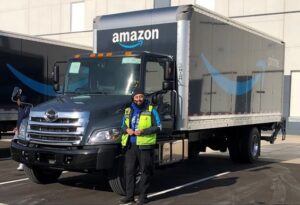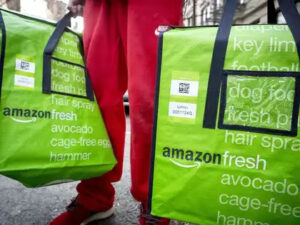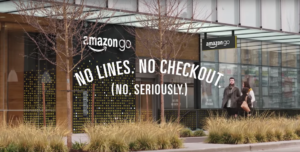
The Amazon Shopping Effect: How a Single Click Shapes the Global Economy
The Amazon Shopping Effect: How a Single Click Shapes the Global Economy
Introduction:
From humble beginnings as an online bookseller, Amazon has morphed into a tech behemoth, reshaping not just the retail landscape, but the very fabric of the global economy. This phenomenon, aptly named “The Amazon Effect,” has been fueled by its innovative business model centered around Amazon Shopping, but its impact goes far beyond mere online purchases.
Clickonomics and the Rise of Convenience:
Amazon Shopping revolutionized the retail experience with its focus on convenience and price competitiveness. Its vast online store, powered by sophisticated algorithms and personalized recommendations, offered a seemingly endless selection at competitive prices, delivered directly to customers’ doorsteps. This “clickonomics” approach, emphasizing ease and affordability, redefined consumer expectations.
Beyond Bricks and Mortar:
The convenience of Amazon Shopping didn’t just disrupt traditional brick-and-mortar stores; it forced them to adapt or face extinction. Many succumbed, while others scrambled to build robust online presences to compete. This shift in consumer behavior impacted entire supply chains, forcing manufacturers and distributors to streamline operations and embrace e-commerce.
The Marketplace Revolution:
But Amazon Shopping wasn’t just about selling its own products. It pioneered the marketplace model, allowing third-party sellers to list and sell their wares on its platform. This opened doors for countless small and medium businesses, providing them access to a global audience and fostering entrepreneurial growth. However, it also raised concerns about control and competition, as Amazon increasingly became a gatekeeper for online commerce.
The Logistics Juggernaut:
To fulfill its promise of fast and reliable deliveries, Amazon built a formidable logistics network, investing heavily in warehouses, transportation, and automation. This infrastructure not only benefited its own operations but also spurred innovation in the broader logistics industry, driving down costs and improving efficiency for other businesses.
Beyond Shopping: The Cloud Empire:
Amazon’s reach extends far beyond Amazon Shopping. Its cloud computing platform, Amazon Web Services (AWS), has become a major player, powering websites, apps, and even entire businesses. This diversification further solidifies its influence on the global economy, with AWS serving as the backbone for various sectors, from finance and healthcare to entertainment and education.
The Ripple Effect: Winners and Losers:
The Amazon Effect has had far-reaching consequences, creating both winners and losers. While consumers benefit from wider choices and lower prices, brick-and-mortar retailers struggle to adapt. Workers in traditional retail face job losses, while gig workers in delivery services grapple with precarious employment conditions. Concerns about data privacy and market dominance also cast a shadow over Amazon’s success.
The Future of Shopping: A Click-and-Mortar World?
The Amazon Effect is still unfolding, and its future trajectory is uncertain. Will the “click-only” model prevail, or will a hybrid, click-and-mortar world emerge? Will regulations rein in Amazon’s power, or will it continue to expand its reach? These questions remain open, but one thing is clear: Amazon Shopping has irrevocably altered the global economic landscape, and its impact will continue to be felt for years to come.
Conclusion:
The Amazon Effect is a complex phenomenon with far-reaching consequences. While its focus on convenience and price has undoubtedly benefited consumers, its impact on traditional retail, workers, and competition raises concerns that need to be addressed. As we navigate this ever-evolving landscape, it’s crucial to understand Amazon Shopping‘s role and ensure it contributes to a fair and sustainable future for all.
The Amazon Effect: Frequently Asked Questions
1. Is Amazon Shopping good for the economy?
The impact of Amazon Shopping on the economy is complex and has both positive and negative aspects. On the positive side, it has:
- Increased consumer choice and competition: By providing a vast platform for sellers, Amazon has driven down prices and offered consumers access to a wider range of products.
- Boosted e-commerce and innovation: Amazon’s success has spurred growth in the e-commerce sector, leading to advancements in logistics, data analytics, and personalization.
- Created jobs: Amazon is a major employer, and its presence has indirectly created additional jobs in related industries like logistics and delivery.
However, there are also negative consequences:
- Disruption of traditional retail: Many brick-and-mortar stores have struggled to compete with Amazon’s online model, leading to job losses and store closures.
- Concerns about worker conditions: There have been concerns about the working conditions of warehouse workers and delivery drivers for Amazon and its partners.
- Concentration of power: Amazon’s dominant position in online retail raises concerns about its potential to stifle competition and control consumer data.
2. What are the alternatives to Amazon Shopping?
While Amazon Shopping dominates the online retail market, there are alternatives available:
- Supporting local businesses: Many independent retailers offer unique products and personalized service, contributing to the local community.
- Shopping at ethical retailers: Some companies prioritize fair labor practices and environmental sustainability.
- Using online marketplaces: Platforms like Etsy and eBay offer products from independent sellers and small businesses.
- Borrowing or renting: Services like libraries and rental platforms offer access to products without the need to purchase them.
3. What is the future of Amazon Shopping?
The future of Amazon Shopping is uncertain, but several trends could shape its trajectory:
- Increased regulation: Governments may implement regulations to address concerns about competition, data privacy, and worker rights.
- Technological advancements: Innovations in areas like artificial intelligence and automation could further reshape the retail landscape.
- Consumer preferences: Shifts in consumer values, such as a focus on sustainability or ethical sourcing, could influence purchasing decisions.
Ultimately, the future of Amazon Shopping will depend on its ability to adapt to changing regulations, technologies, and consumer preferences while addressing the concerns surrounding its impact on the economy and society.
Meta Description:
Dive into the “The Amazon Shopping Effect”: how this online giant’s business model shapes global economies, from convenience to competition. Explore the impact on Amazon Shopping and beyond. #Amazon Shopping Effect #Shopping #Economy








